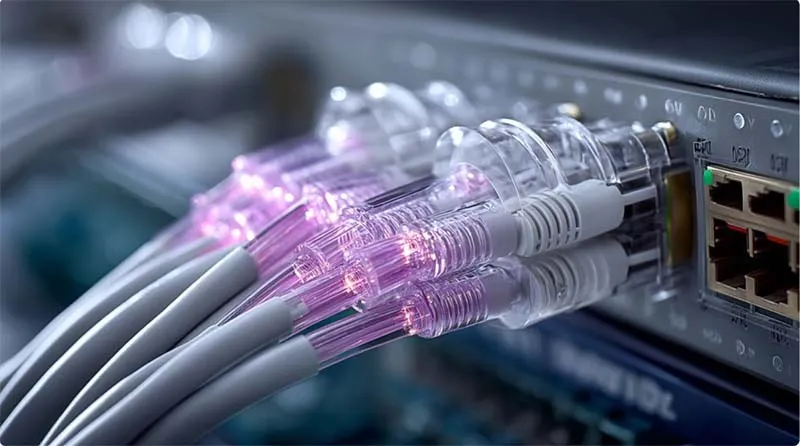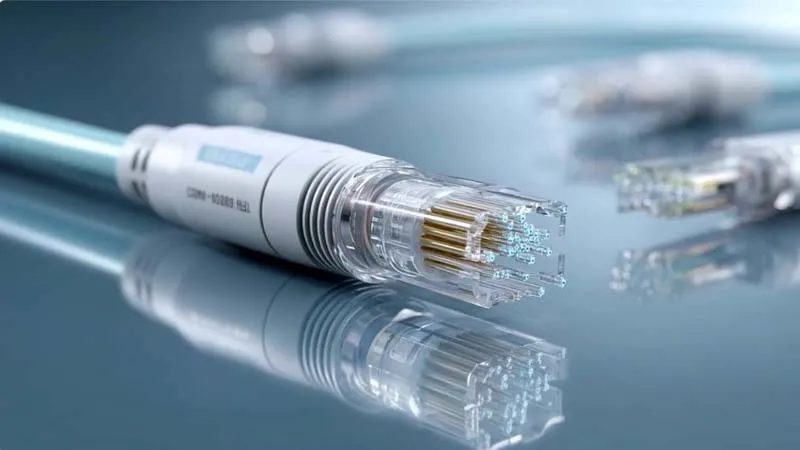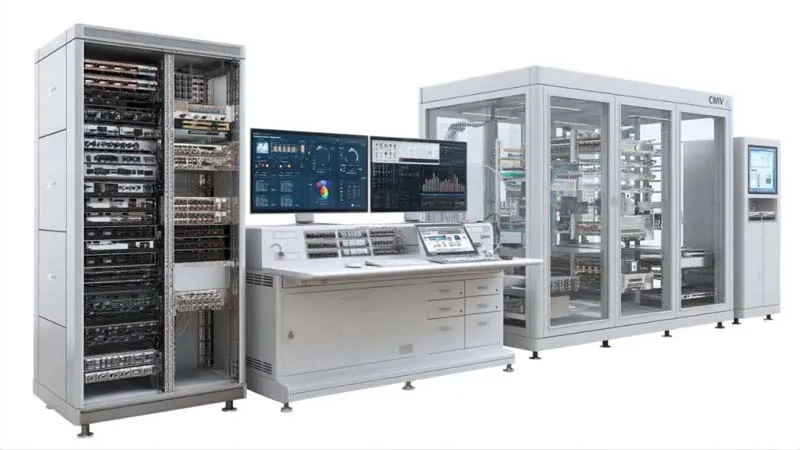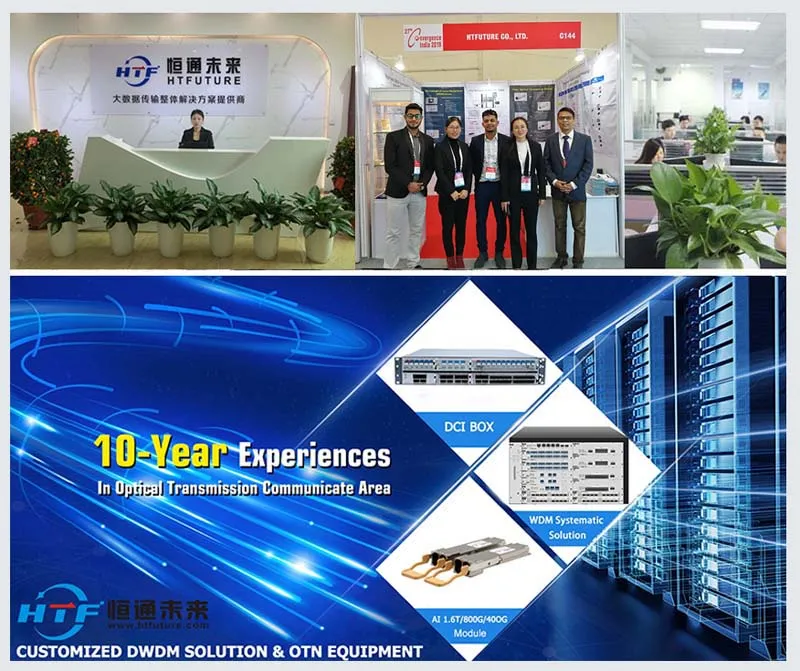The optical communication industry is booming. Global data traffic is skyrocketing. 5G, cloud computing, and IoT demand massive bandwidth. Yet, many regions rely on outdated G.653 fiber, facing bandwidth shortages and costly upgrades. CWDM (Coarse Wavelength Division Multiplexing) offers a game-changing solution. By adding a pair of CWDM devices, old G.653 fiber capacity can surge eightfold. Plus, it’s cost-effective and minimizes service downtime. This makes CWDM a must-have for operators and businesses seeking seamless network upgrades.
CWDM Technology: Affordable Capacity Boost
CWDM uses wide 20nm wavelength spacing, covering 1270-1610nm. It supports up to 18 channels. Unlike DWDM, CWDM relies on uncooled lasers and simple optics. This slashes equipment costs and power use. Its wide spacing works well with older G.653 fiber, which has higher dispersion. In bandwidth-constrained areas like metro networks or rural regions, CWDM boosts single-fiber capacity eightfold or more. No need to replace existing cables. This saves significant costs.
Compared to DWDM, CWDM shines in short-range (100-160km) scenarios. It’s affordable and easy to deploy. Maintenance costs are low. Installation is quick, cutting downtime to hours. For telecom operators, small businesses, or data centers, CWDM delivers flexible, high-speed solutions. It ensures smooth network upgrades with minimal hassle.
Overcoming G.653 Fiber Challenges with CWDM
G.653 fiber, a dispersion-shifted type, was common in the 1990s. It supported long-distance transmission then. Now, it struggles with modern bandwidth needs. Single-wavelength capacity is low. Dispersion management is complex. Replacing fiber is expensive and disruptive. In resource-scarce areas, new cables can cost millions. Downtime may last weeks, harming operations.
CWDM transforms this scenario. By adding CWDM devices at both ends of G.653 fiber, operators can add eight wavelength channels (1271-1611nm). This boosts capacity from 2.5Gbps to 20Gbps or higher. CWDM uses uncooled DFB lasers and passive optics, ensuring low power and maintenance costs. Its plug-and-play design allows deployment in hours. Downtime is minimal, often under four hours. Thus, CWDM delivers seamless upgrades.
Moreover, CWDM offers flexible wavelength allocation. Operators can assign dedicated channels to clients. This meets diverse bandwidth needs, like leasing wavelengths for specific services. Such flexibility and cost-efficiency make CWDM ideal for resource-constrained regions.
CWDM’s Wide-Ranging Applications
CWDM excels beyond traditional metro networks. In fiber-scarce areas, it powers multiple scenarios:
– Metro and Access Networks: CWDM supports cost-effective, short-range transmission for urban networks and fiber-to-the-premises.
– Enterprise Networks: Small businesses use CWDM to upgrade networks for high-speed data and video conferencing.
– Rural Areas: CWDM leverages old fiber to deliver high bandwidth, bridging the digital divide.
– 5G and Data Centers: CWDM supports 5G fronthaul and data center interconnects with low-cost, low-latency solutions.
For example, a regional telecom operator deployed CWDM on G.653 fiber. In two days, capacity jumped from 2.5Gbps to 20Gbps. Downtime was under four hours. Costs were a quarter of DWDM solutions. This highlights CWDM’s efficiency, affordability, and reliability.
Industry Trends: CWDM’s Bright Future
5G, cloud computing, and IoT are driving bandwidth demand. The global WDM market will hit $4.787 billion by 2031, with a 5.3% CAGR. CWDM stands out for its low cost and flexibility, especially in metro and access networks. Looking ahead, CWDM will integrate with new technologies. Compact CWDM (CCWDM) shrinks equipment size tenfold using thin-film filters. Medium WDM (MWDM) blends CWDM and DWDM strengths for 5G fronthaul.
Additionally, CWDM pairs with software-defined networking (SDN). This enables dynamic wavelength allocation, boosting network intelligence. In the push for green communication, CWDM’s low-power design shines. Unlike DWDM’s power-hungry amplifiers, CWDM’s passive optics and uncooled lasers cut energy use. This supports operators’ sustainability goals.
Seize the CWDM Opportunity
Struggling with limited fiber resources? CWDM is your answer. Deploy CWDM on G.653 fiber to boost capacity eightfold. Costs are a fraction of traditional upgrades. Downtime shrinks to hours. Telecom operators, data centers, and enterprises all benefit. CWDM delivers instant bandwidth gains and long-term scalability.
As a leader in optical communication, HTF provides cutting-edge fiber products and WDM solutions. Our team, with over a decade of expertise, builds and optimizes fiber infrastructure. The HTF HT6000, a compact, high-capacity OTN system, supports CWDM/DWDM platforms. It offers multi-service transmission and flexible networking. Ideal for national backbones, metro networks, and data centers, it meets 1.6T+ capacity needs. It’s the most cost-effective WDM platform available.
Contact HTF today. Assess your network needs. Embrace CWDM for efficient, green communication. Together, let’s power the future of 5G, cloud, and big data!







